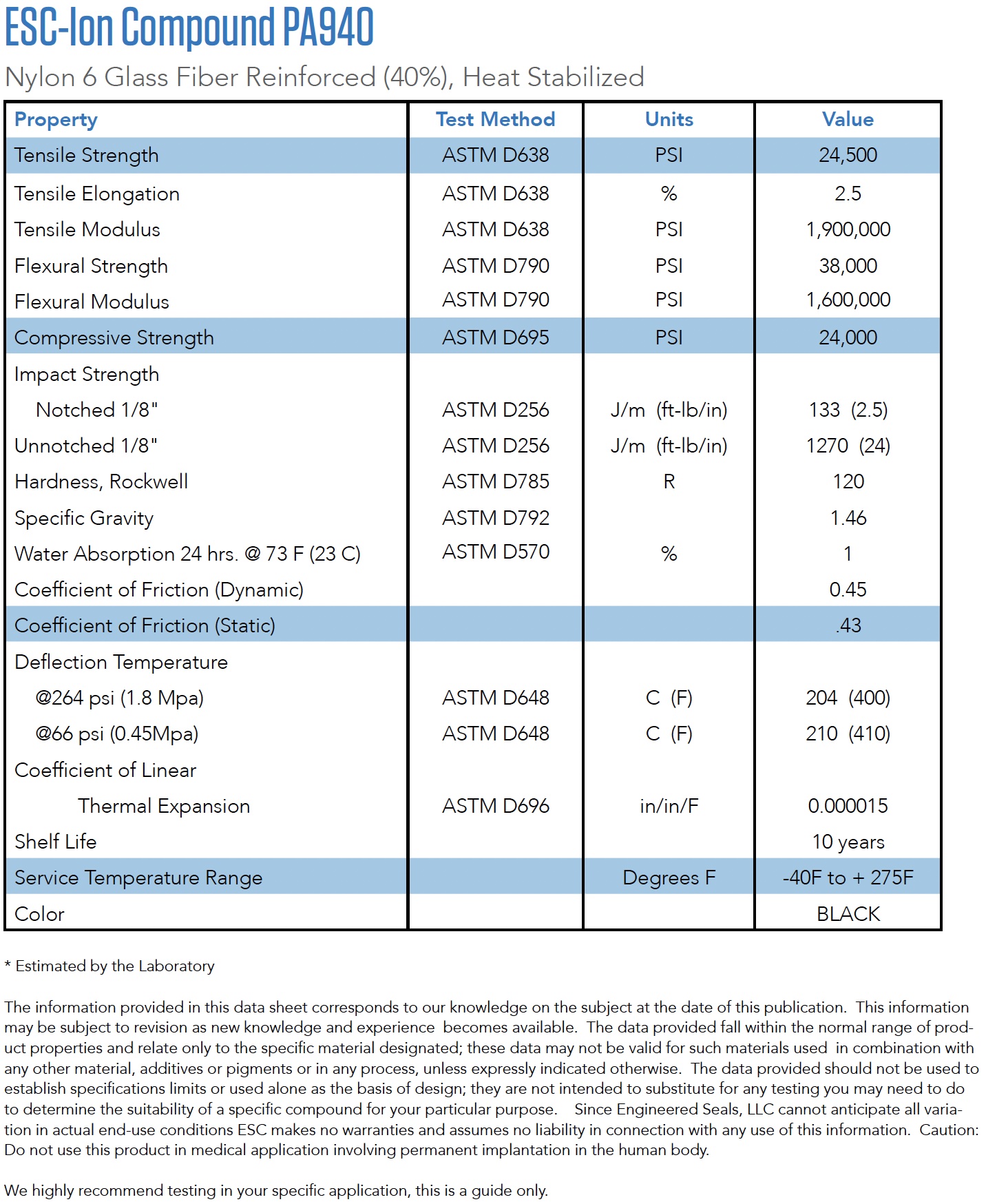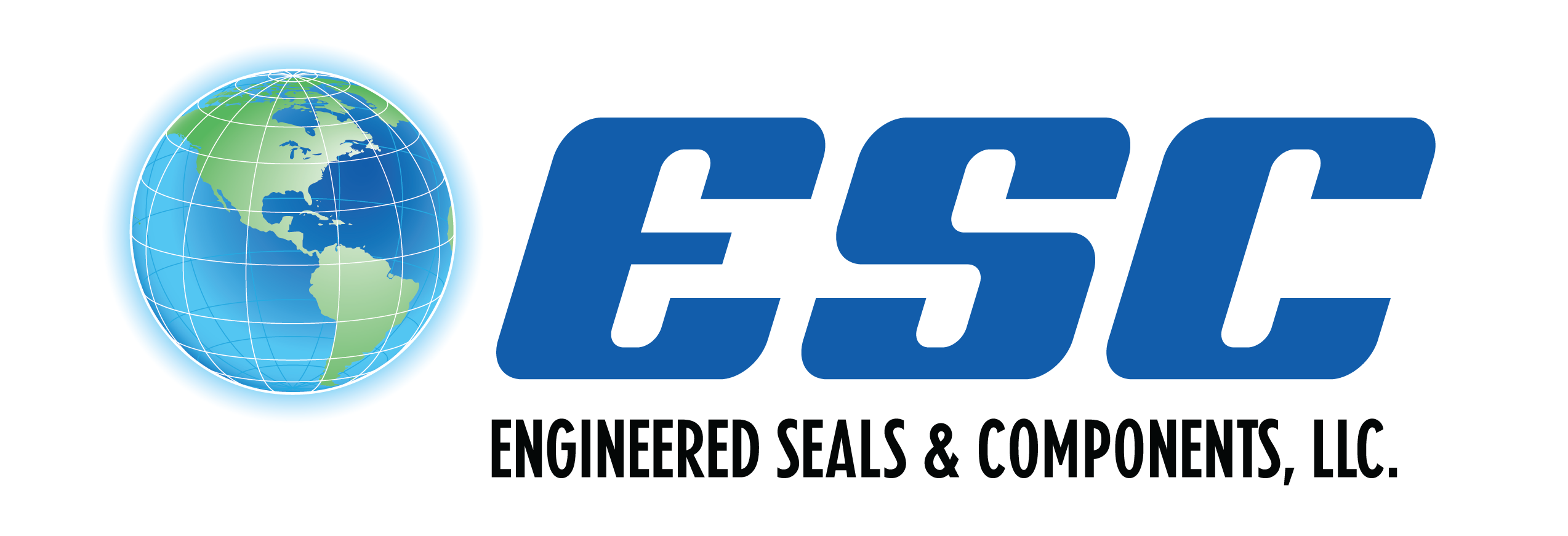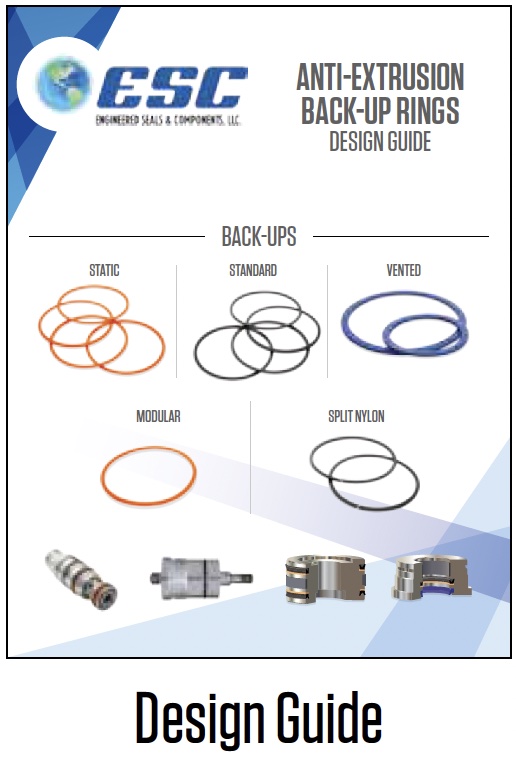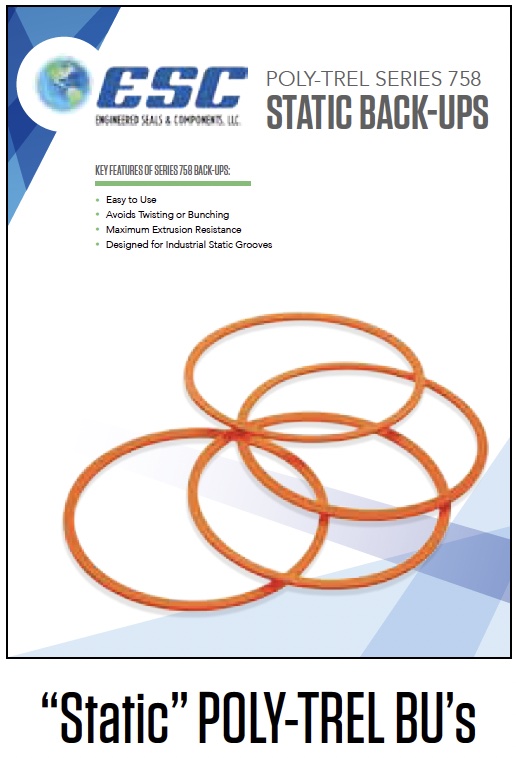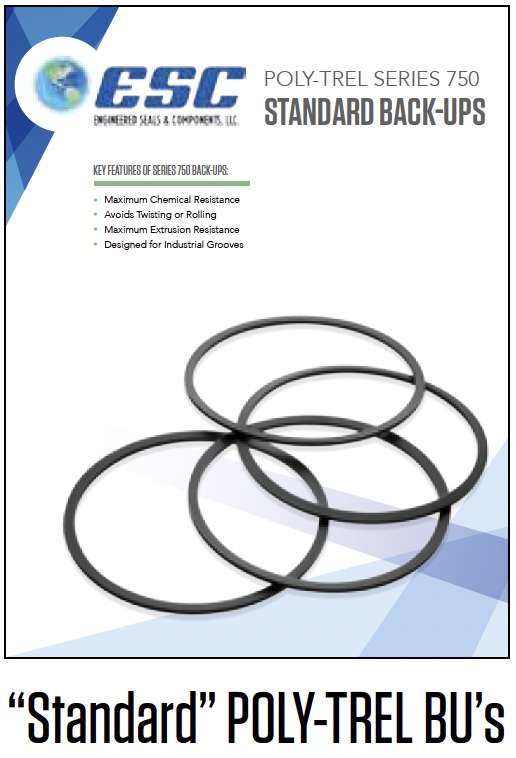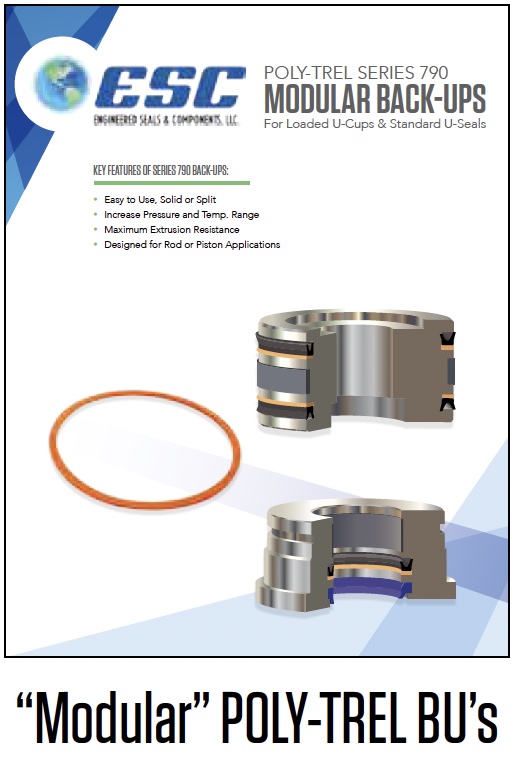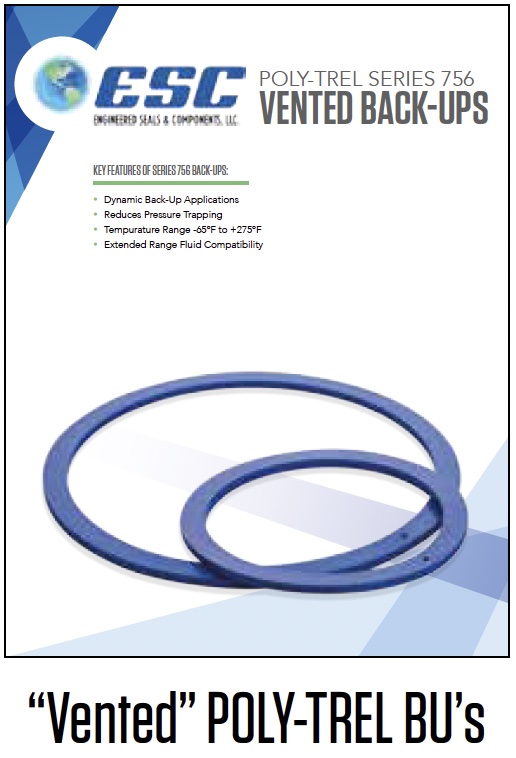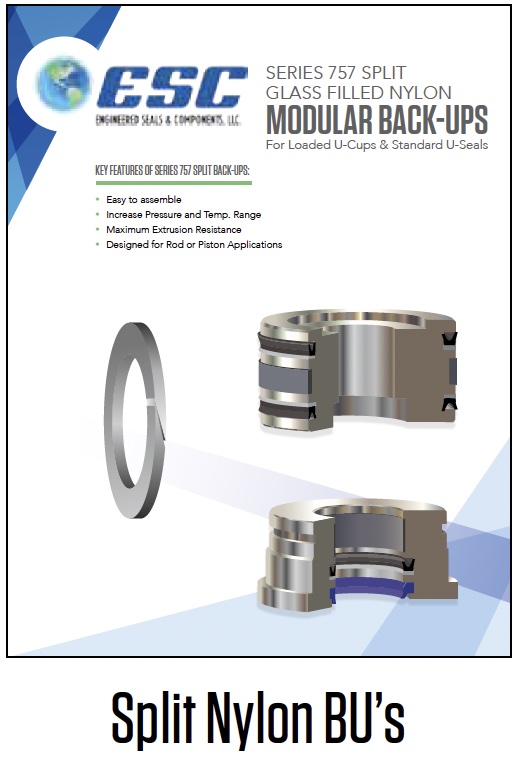
Back-up Rings
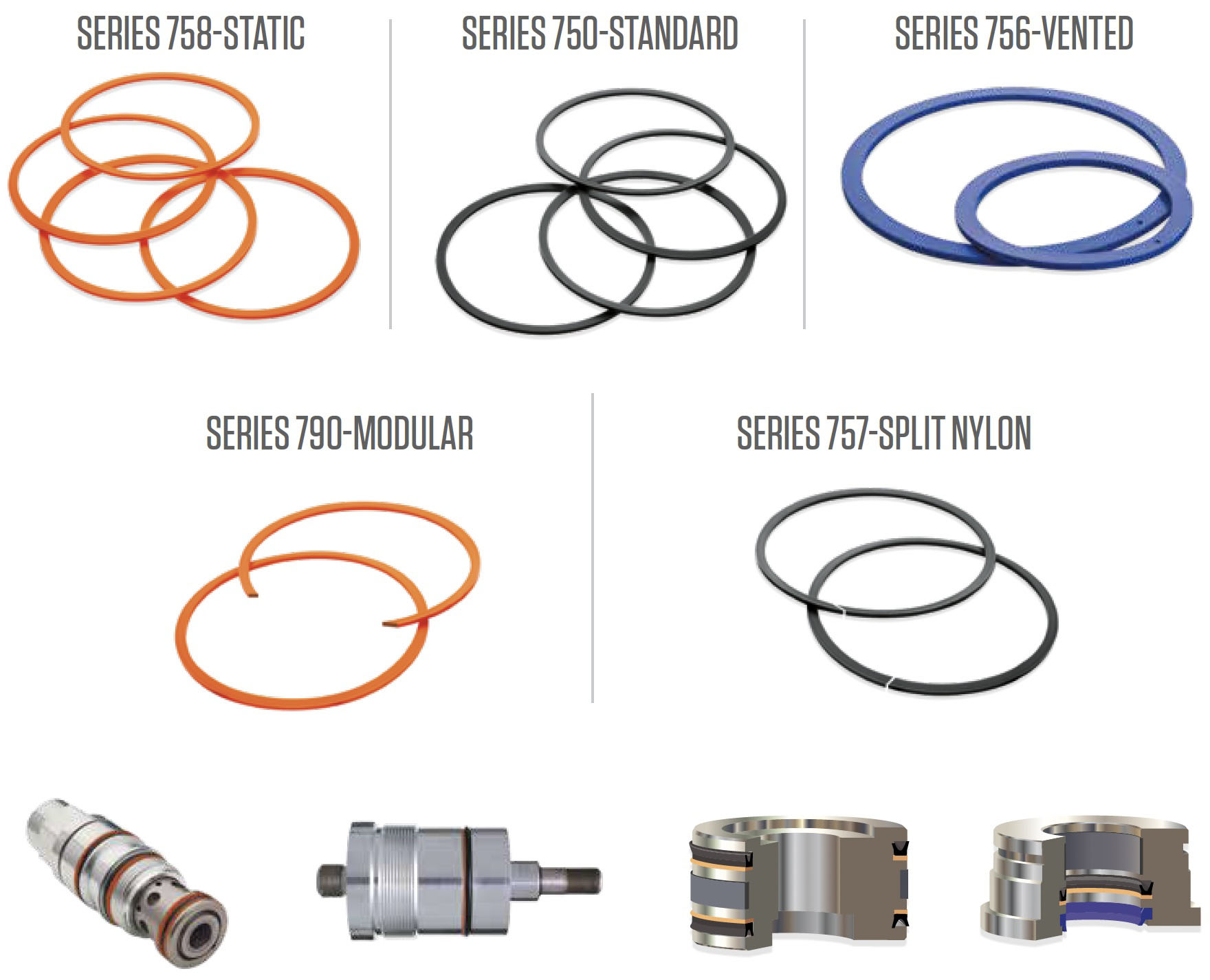
Why ESC Back-up Rings?
History of the Back-up Ring
The anti-extrusion Back-up Ring likely found its roots in the use of leather packings. Leather was used as the sealing device in glands prior to the use of O-Rings. In 1937, Niels A. Christensen was granted a U.S. Patent for “new and useful improvements in packings and the like for power cylinders.” This seal was known as the O-ring.
The O-ring provided a much better seal compared to leather. However, the leather packings would fill the extrusion gap without being nibbled, allowing for larger gaps and higher pressures.
The persistent issue that engineers faced was how to take an O-ring that operated optimally with narrow extrusion gaps and extend its service by widening the extrusion gaps.
Answer: The Back-up Ring
The first Back-up ring devices were made from materials like leather. Since leather was used in cup packings at higher pressures and higher clearance gaps, it made sense that a flat washer could be used as an anti-extrusion device for the O-ring. It worked!
The problem with leather was that it could become dry and shrink away from the sealing surface, exposing the elastomer to the same pressures and nibbling, it was intended to protect against. A material less sensitive to these conditions was needed.
Next in 1944 came the invention of PTFE, commonly known as TEFLON®. It was tried as a back-up ring and had much success because it overcame many of the problems of leather.
Introduced in 1960, the molded rubber concave back-up ring came to market. It had many advantages over both leather and PTFE, especially cost and ease of assembly.
As hydraulic systems started to see larger extrusion gaps and higher temperatures, a more robust material was needed. In 1974 a material known as Hytrel® was introduced. Hytrel® is a copolyester elastomer, “a synthetic rubber”, TPC-ET.
Hytrel® plays a big role in the O-ring Back-up ring market today.
Engineered Seals & Components has made this the base material in many of the ESC compounds known as POLY-TREL™. It has superior chemical, temperature, and pressure resistance than many other materials.
Modern Design and Construction of the Back-up Ring
Our modern hydraulic systems often find O-rings operating at extreme pressures with the use of Back-up rings made from a variety of materials like POLY-TREL™, Acetal, Nylon, PEEK, and Filled Nylon.
Engineered Seals & Components has always made its’ line of Back-up Rings for specific applications so your systems will run at optimal efficiency.
The following pages are the standard product line offerings. ESC has many thousands of custom Back-up Rings designed specifically for the application, whatever it may be.
With today’s technology and a huge selection of materials, seals can reach the next level of performance with relatively little expense.
ESC Extrusion Gaps
The process by which seal material is forced into the clearances between components is called gap extrusion. The dimension of this clearance gap is referred to as the extrusion gap, or “e-gap”. (Fig. 2)
The resistance of a given seal component to gap extrusion is mainly determined by the material composition and quality. Materials of greater hardness and stiffness typically also have improved resistance to extrusion. Therefore, full-face anti-extrusion or back-up rings of materials harder than the seal material may be used to prevent seal extrusion into the Extrusion-gap. (Fig.3)
Pressure is the main culprit of extrusion, but the e-gap size and system temperatures are also major factors. Chart 2 shows the pressure resistance of different materials as a function of temperature, at 70ºF.
While these sample values illustrate the differences in extrusion resistance for standard grades of typical seal materials, there are many variations of each basic composition that impact the extrusion resistance of seals. In addition, the profile design and the seal friction affect extrusion. For maximum allowable pressure, temperature, and e-gap of each seal profile, refer to the specific compound and manufacturer’s recommendations. The maximum e-gap in a hydraulic cylinder occurs when the cylinder components are at the maximum radial misalignment of components. This misalignment is affected by:
- External forces acting upon the cylinder assembly (acceleration forces, side loads, frictional moments from rotation of cylinder end connections).
- The weight of the cylinder components (especially when used horizontally).
- Deformation of cylinder components (rod flexing, wear ring radial deformation under load).
- The tolerance stack up of multiple cylinder components
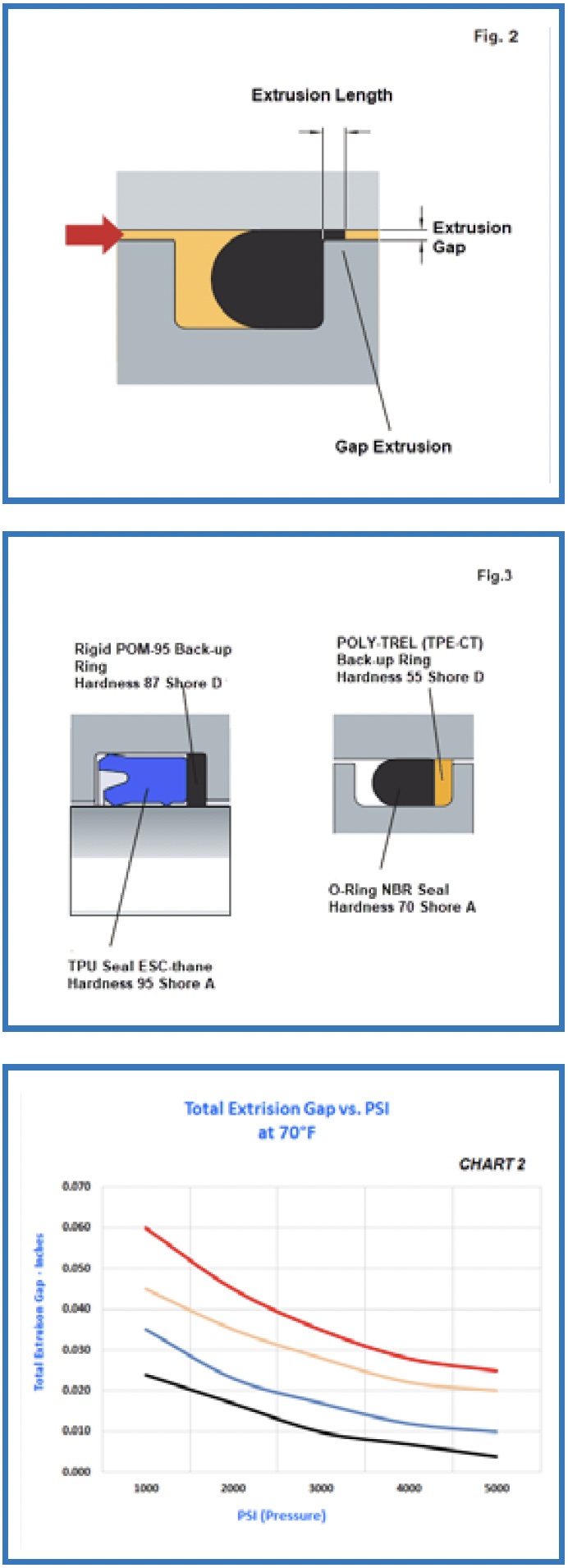
Series 750 "Standard" Back-up Rings
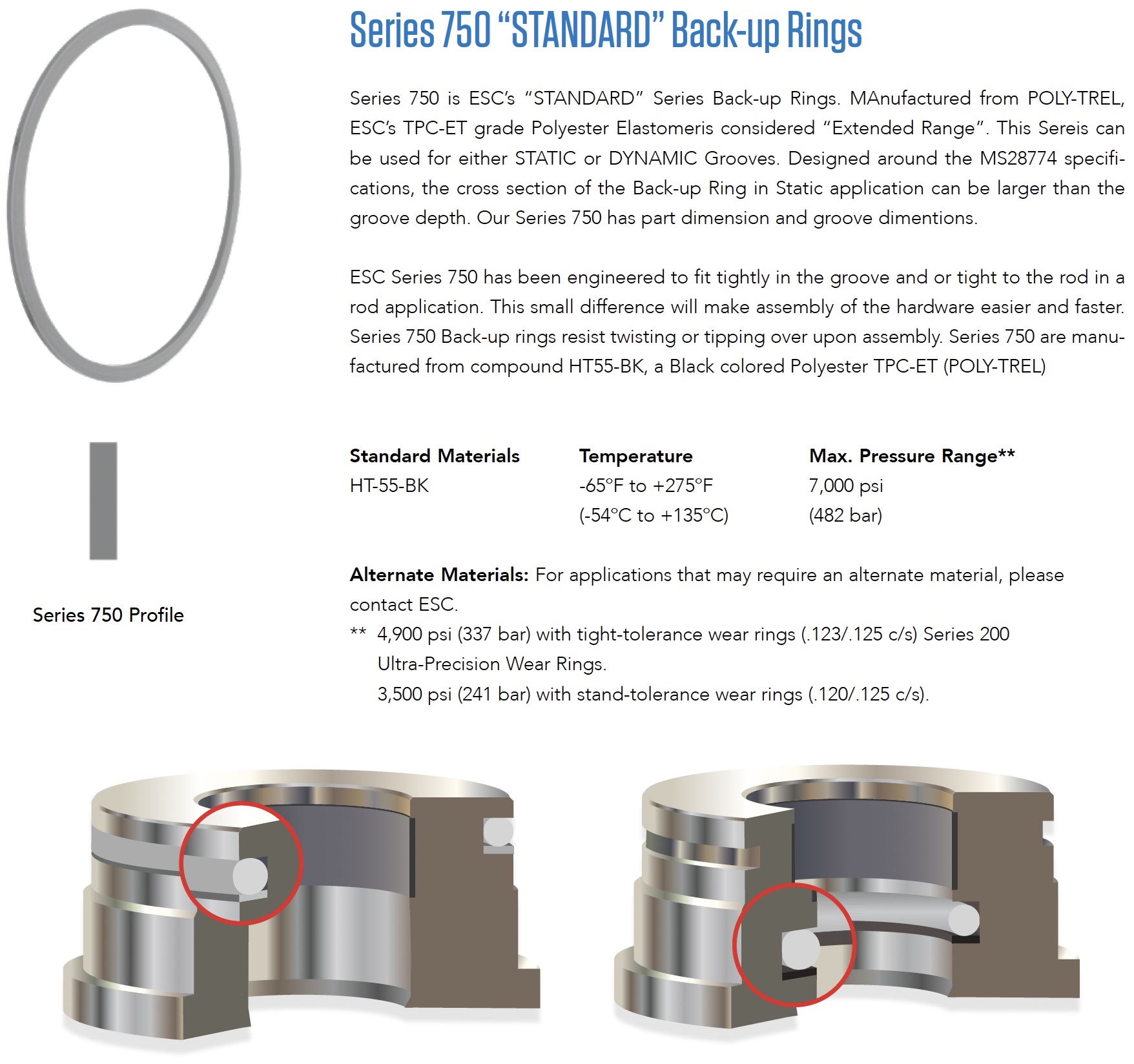
Series 758 "Static" Back-up Rings
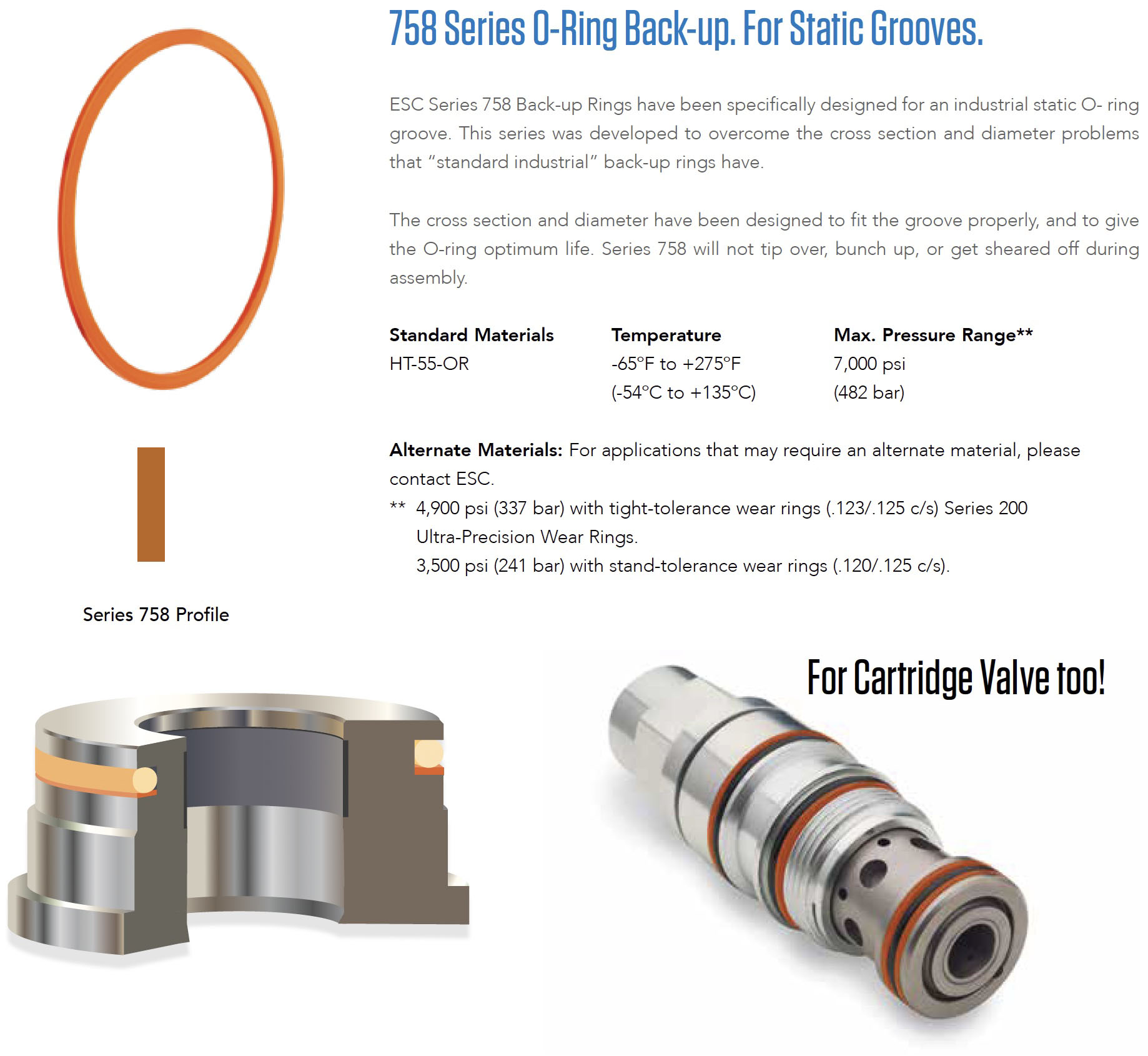
Series 756 "Vented" Back-up Rings
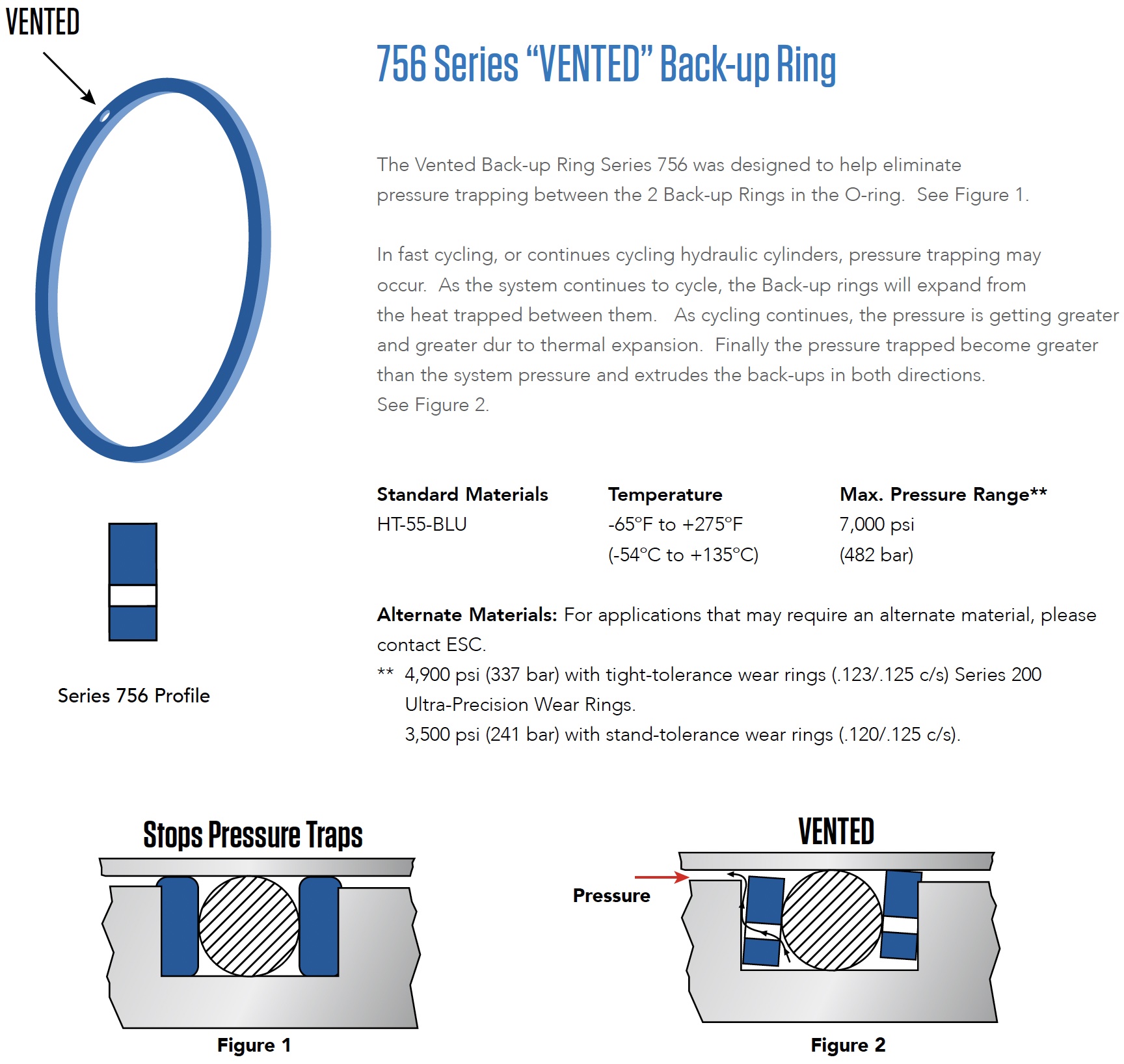
Series 790 U-Cup Seal Back-up Rings
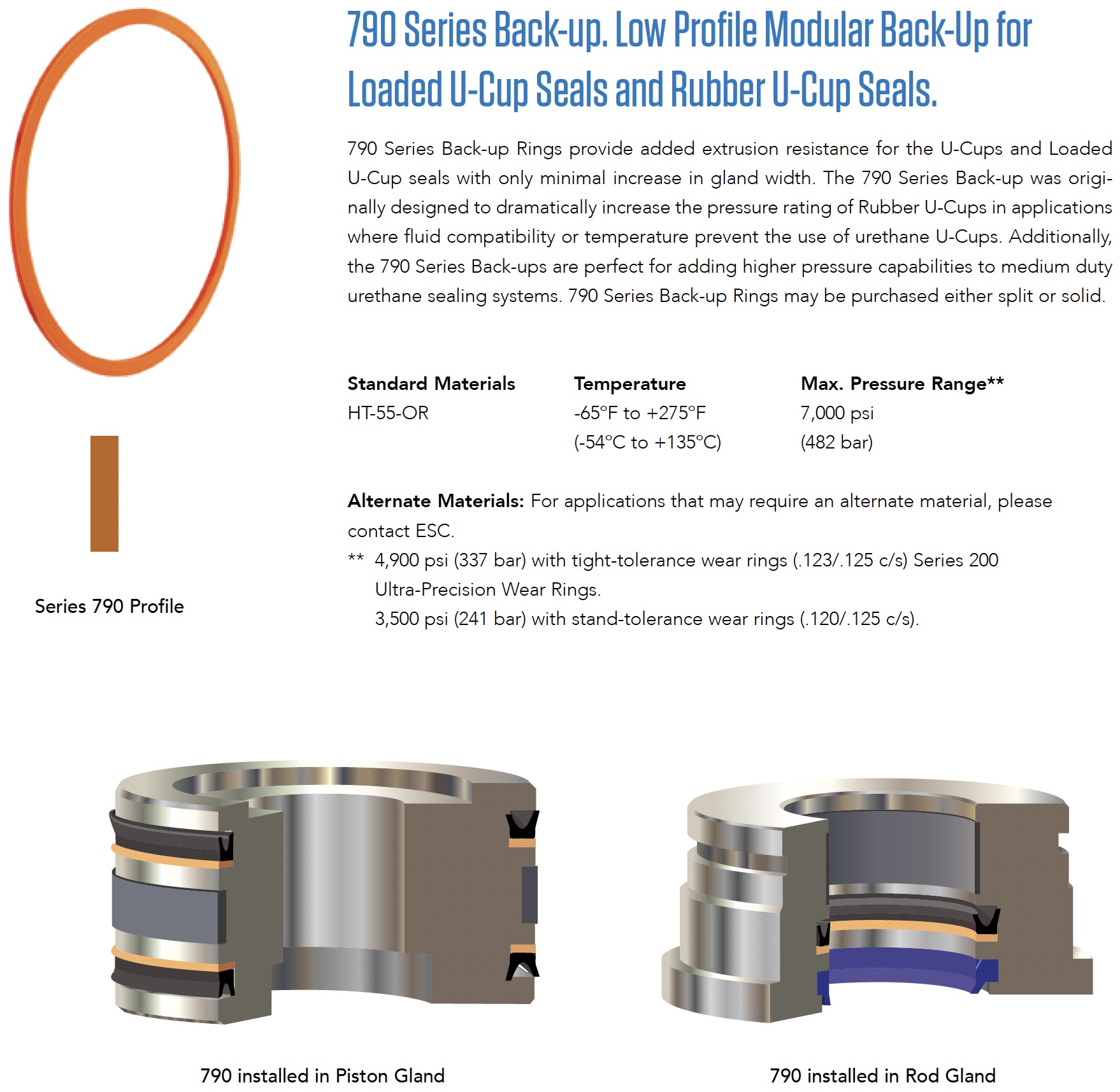
Series 757 ESC-lon™ Back-up Rings
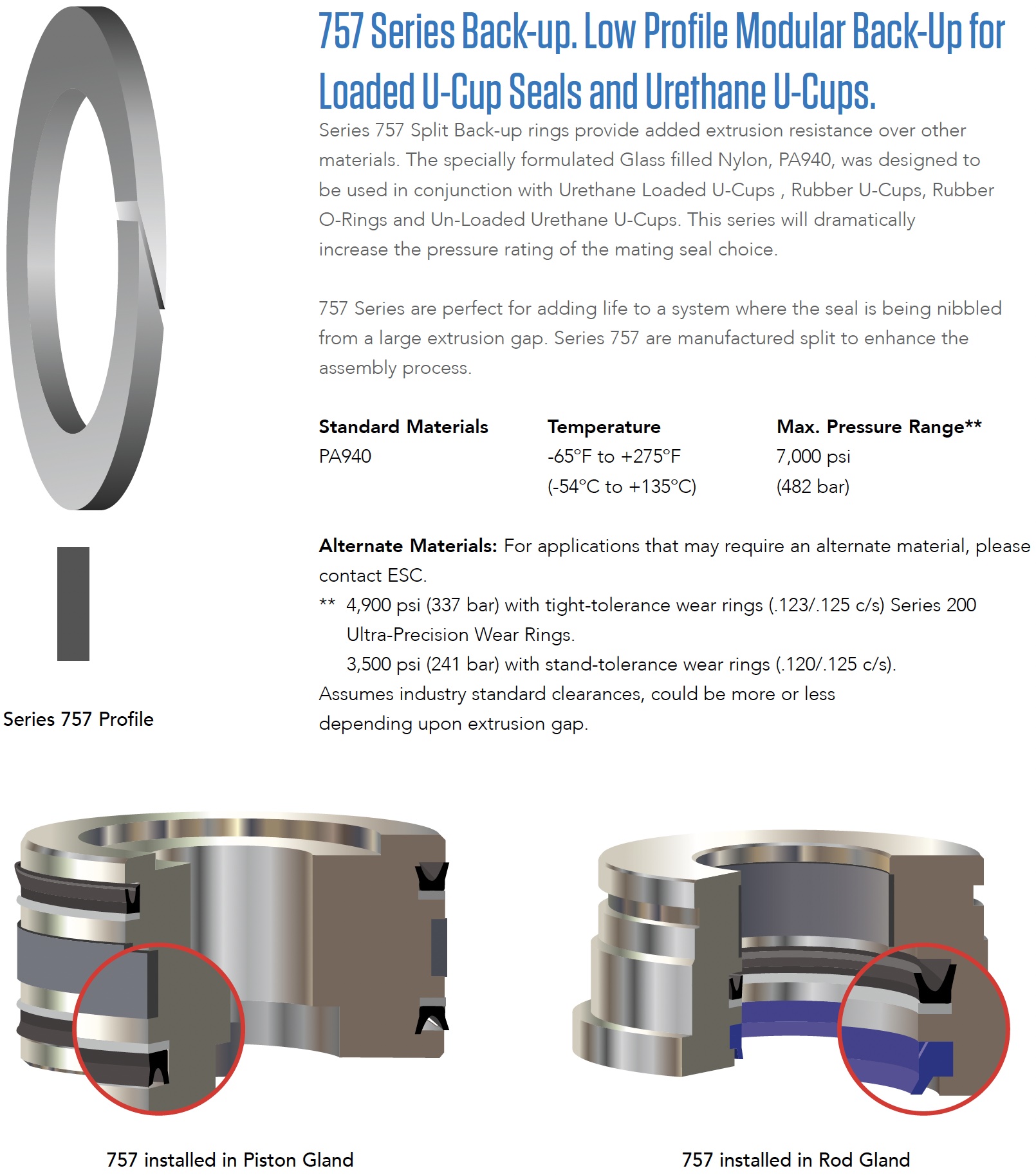
Jet Express Custom Back-ups On Demand
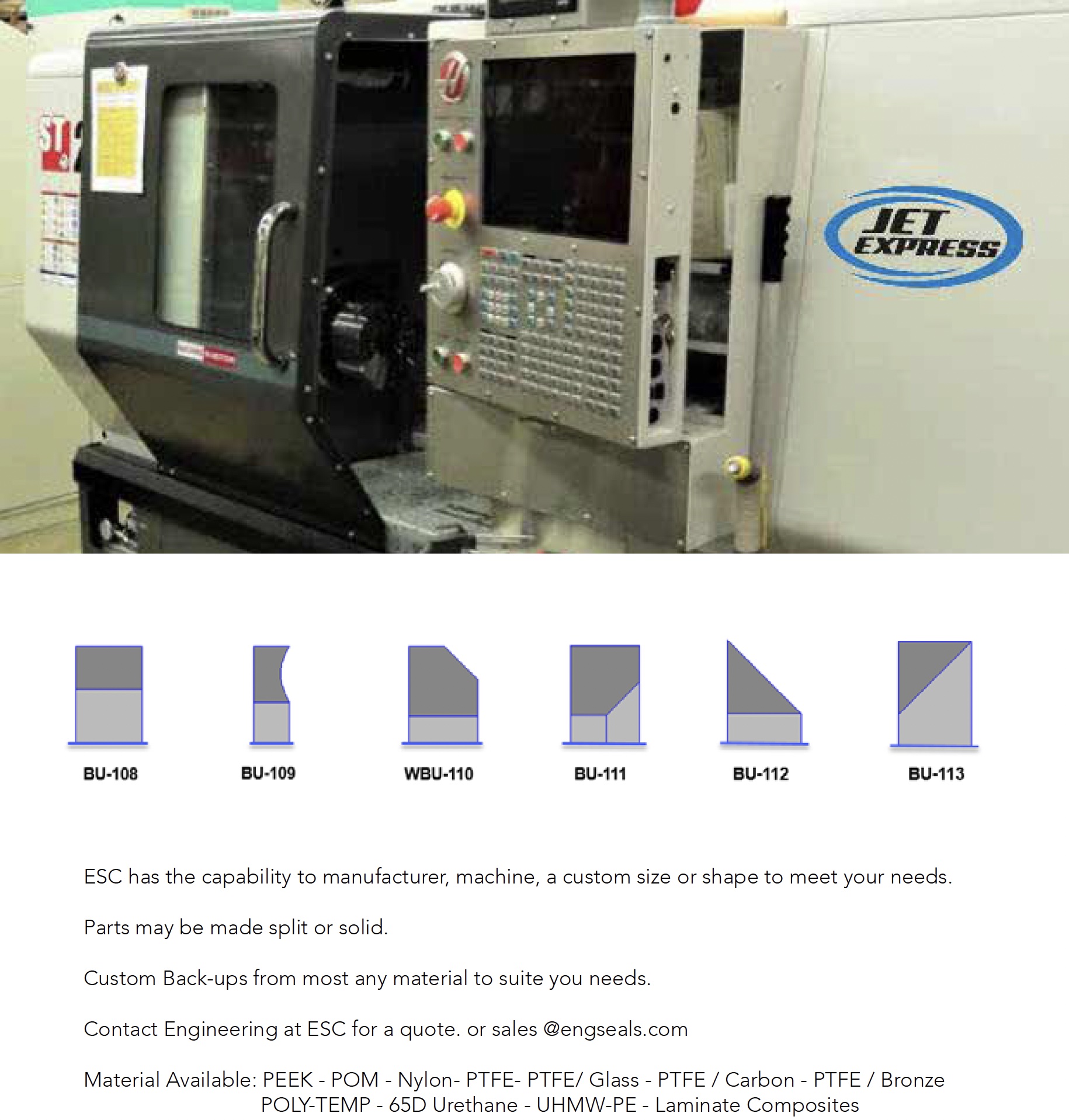
POLY-trel™ Standard Compounds
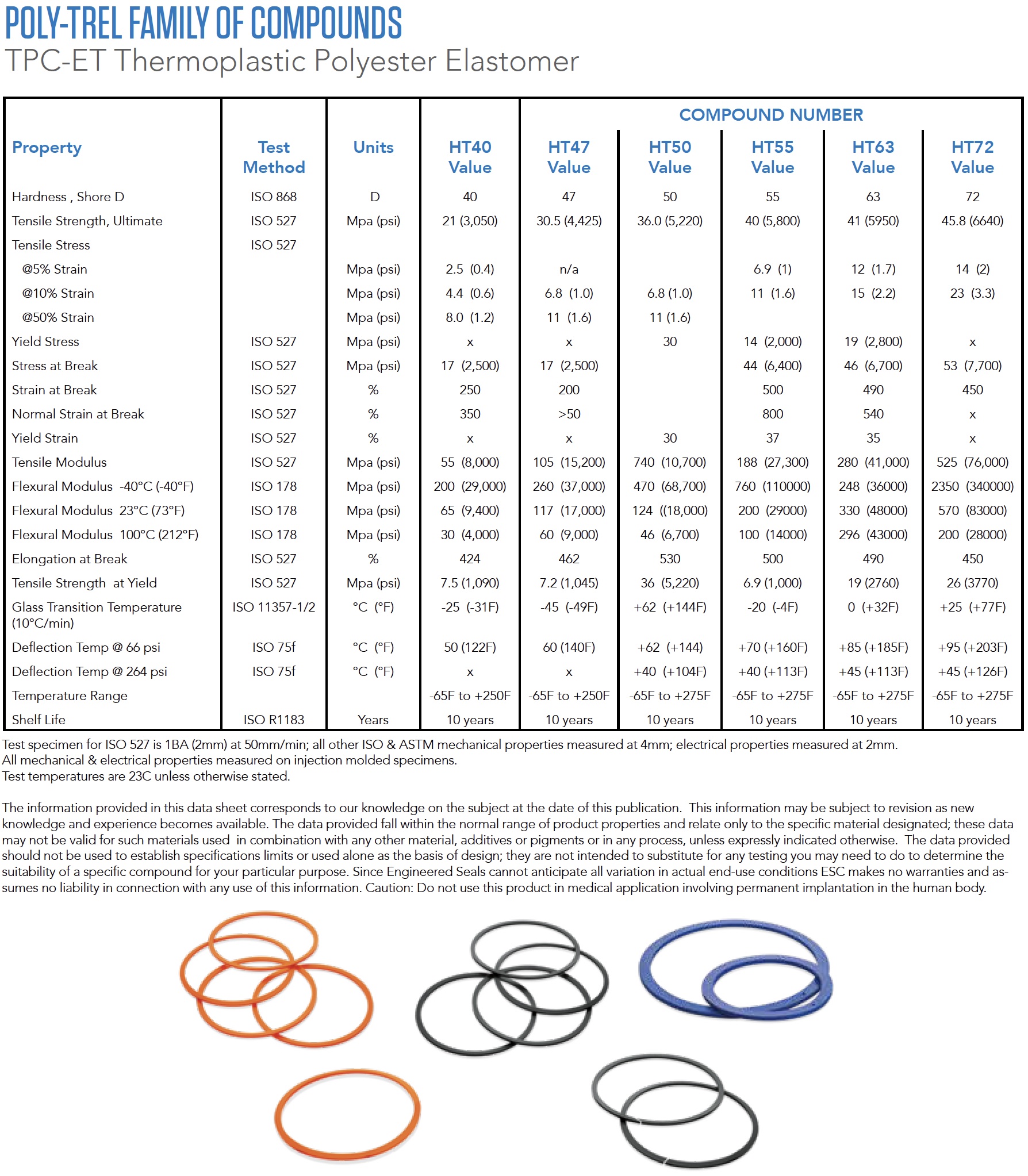
Series 757 Standard Compound
